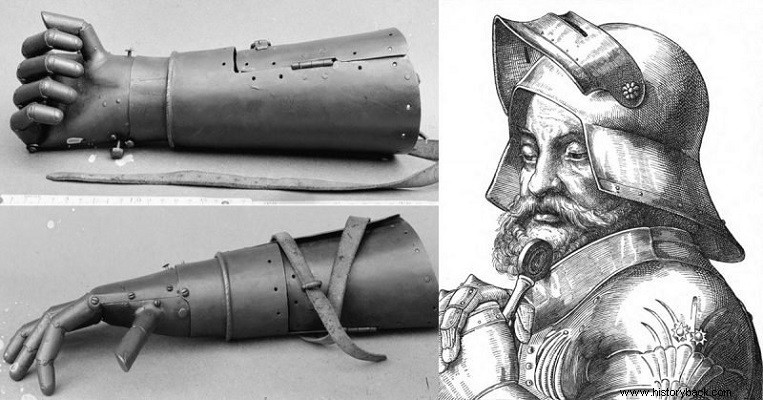
Getz von Berlichingen he is known as the knight with the iron hand . A revolutionary spirit, outspoken and proud, a bandit but also a defender of the empire, a protector of the weak but also a villain, he became a kind of German Robin Hood fighting his class on behalf of the poor.
A scion of the noble family of Berhlingen, he was born in 1480. He was the 10th child of the family. He spent his childhood in the family castle, then in the monastery of Niederhal, where he received some education and then was sent to his uncle Conrad through whom he entered the service of the Maghreb (marquis) of Ansbach.
But soon he decided to abandon security for the sake of adventure. At the age of just 17, he took part in the operations of the German emperor Maximilian in Burgundy, Lorraine, Brabant and Switzerland.
In 1500, together with his brother Philip, he met Thalacher von Massenbach, also a wandering, adventurous knight, who had made his fortune by robbery, kidnapping and plunder. In one of the operations with him Gets almost met his death in Swabia.
In 1502 he returned to legal activity and joined the service of the Maggrave of Brandenburg who was fighting against the city of Nuremberg. Two years later he was fighting under the banner of the Duke of Bavaria.
During the siege of Landshut a cannonball shattered his right arm. After several painful weeks following his amputation, Getz commissioned a blacksmith to make him an iron arm. Thus the maimed knight became combative again!
It is not known, however, whether he could fight holding the sword or lance with the iron hand, or whether he simply held the horse's reins with it and was forced to become left-handed in order to fight with weapons.
But later he acquired a more perfect iron hand with jointed fingers that probably allowed him to wield the sword. This hand is exhibited today in the Jogsthausen museum.
In the next seven years, with an iron hand, he managed to win 15 fiefs, helping friends but ordinary people by protecting them from evildoers. However, in 1512 he could not resist the temptation to attack a caravan of 95 merchants to rob them. Emperor Maximilian arrested him and imprisoned him. When he was finally freed he kidnapped the Count of Waldeck whom he only released after receiving a ransom. This act of his angered the emperor who exiled him.
Despite this, Gets did not leave but continued his evil activity. he was arrested in 1519 and spent three years in prison, until he was released with money from a friend and after he vowed to retire to his estates and stop his criminal activity for good.
In 1525 the revolution of the peasants against the nobles broke out in Germany. Gets joined the rebels and took command of their division. It seems that Getz was ideologically motivated. On one occasion he dressed Count Lövenstein as a shepherd and forced him to tend a flock of sheep.
But he soon became disillusioned as he found that the rebels were just an undisciplined mob who liked to loot and steal, even from poor people like themselves. So after a few weeks he retired again to his estates. He returned to action, again in favor of the peasants, but at the Battle of Ausburg, in 1528, he was captured. He was imprisoned in a dungeon for two years and was released swearing never to leave his estates.
Having reached 50 and being the father of 10 children he calmed down and kept his promise. In 1542 he joined the army of Emperor Charles V and fought against the Turks in Hungary. In 1544 he took part in the war against the French. Gets then returned to his castle where he lived quietly for the rest of his life. He died at the age of 82 in 1562. His story was long forgotten until the great Goethe brought it back to life.
